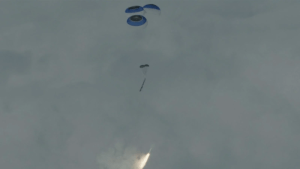WASHINGTON — A test of a long-range radar that is part of the Ground-based Midcourse Defense system was called a success, the Missile Defense Agency and Boeing announced.
The MDA, in cooperation with U.S. Space Force and U.S. Northern Command, conducted the test Monday, in which the Long Range Discrimination Radar at Clear Space Force Station, Alaska, acquired, tracked and reported missile target data to the Command and Control Battle Management and Communications.

The GMD system is the only defense program able to protect the entire United States, including Hawaii and Alaska, against long-range ballistic missiles. The system is designed to detect, intercept, and destroy ICBMs.
Boeing has supported the GMD program out of Huntsville as the lead system integrator since the inception of the program in 1998 through development, test, operations and sustainment with engineers and experts who work in Alabama.
“This was a significant step forward in strengthening our nation’s defenses,” said Ted Kerzie, executive director of Boeing Strategic Missile & Defense Systems. “This latest test underscores our ongoing dedication to enhancing America’s layered missile defense architecture.”
The system has been on alert for nearly two decades and is an integral part of America’s layered ballistic missile defense architecture, Boeing said in its news release.
During the exercise, a target developed by MDA was air-dropped from a C-17 Globemaster, allowing the radar to track a live target and gather essential data.
It flew over 2,000 kilometers off the southern coast of Alaska where it was tracked by LRDR, as well as the Upgraded Early Warning Radar at Clear Space Force Station. Sensor data was passed to GMD to support a simulated engagement.
“This was a key test in the development of the LRDR system and its integration into the C2BMC network,” said MDA Director Lt. Gen. Heath Collins. “LRDR will provide USNORTHCOM and the United States Space Force with the ability to precisely track ballistic missile threats as well as other space objects, advancing our ability to deter adversaries and bolster our homeland missile defense.”
Initial indications show that LRDR, C2BMC, and GMD Fire Control met mission requirements, the MDA said in a news release.
Don’t miss out! Subscribe to our email newsletter to have all our smart stories delivered to your inbox.


